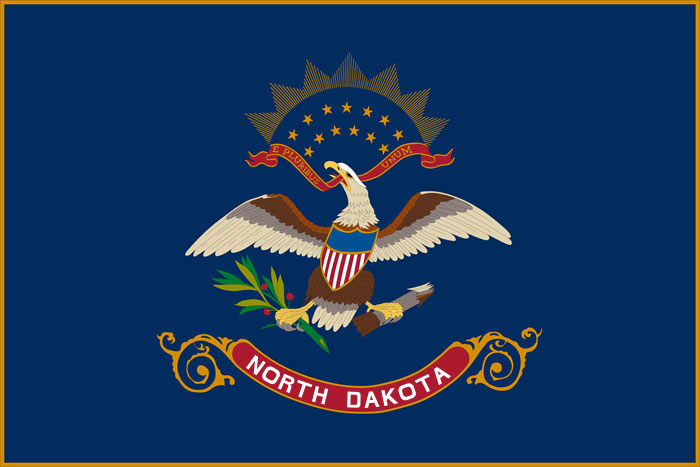Collaboration and leadership are key lessons Terry Sando shares regarding how the Grand Forks region has become a national leader in unmanned aerial system (UAS) development. Sando is the director of UAS Development for the Grand Forks Region Economic Development Corporation (EDC).
How has the industry developed in the Grand Forks region?
The development of the unmanned aerial system (UAS) industry began about 12 years ago when the Grand Forks Air Force Base mission was realigned and it received a Global Hawk mission. At the same time, the University of North Dakota (UND) began developing UAS-related aviation programs. Economic development and community leaders saw the opportunities to begin creating a new sector and diversify the regional and state economies as a result.
How did you obtain the community and/or government support for the development?
That has never been a challenge in Grand Forks. From the federal level – our congressional delegation and Pentagon – to the state, county and community levels, we have worked closely together throughout the evolution of the industry. All involved have recognized the benefits of aligning to advance public and private needs and opportunities. The Grand Sky (UAS) Business and Aviation Park is an example of what can happen when public and private partnerships work together to address industry needs. Grand Sky is a result of county leaders working with the U.S. Air Force to lease land at the Grand Forks Air Base to develop a place for UAS companies to locate. Grand Forks County leases 217 acres of land and is working with a private developer who is building out the park. Northrop Grumman and General Atomics are already on-site, and there will be new groundbreakings this spring/summer.
Tell us how the UAS industry is affecting your community?
There is a real sense of commitment and excitement throughout the region, at all levels. People are excited about the business and education opportunities. Companies like SkySkopes and Field of View are examples of local companies created by UND students to fill niches in the market. The EDC and Evolve Grand Forks have started hosting a monthly luncheon, Drone Biz, which attracts an average of 50 entrepreneurs, business people, students and others each month to learn about UAS opportunities in the region and network with each other. To support the employment demands of current companies, as well as those we are working to attract, the EDC is undertaking initiatives to address housing and workforce needs.
How does the region differentiate itself from similar endeavors?
Where do I begin? The Grand Forks region and North Dakota have a deep history of aviation innovation. We are pioneers and are continuing that pioneering spirit in this industry. We are the first in the U.S. on many UAS fronts. The unique assets we have that are attracting business and industry to expand here include the Northern Plains UAS Test Site, University of North Dakota and Grand Sky (UAS) Business and Aviation Park. The state is the first to receive approval for simulating flying drones beyond a pilot’s line of sight. In addition, the region recently extended the boundaries of its foreign-trade zone, which will attract companies importing and exporting, and a benefit we believe will be especially appealing to companies fabricating UAS related goods. The EDC works to connect companies with our research universities and other partners to research and test ways to integrate UAS into their operations. From those successful projects, companies are establishing a presence here and expanding into the region.
What are the opportunities for business in this industry?
The UAS industry is more than just the drone flying in the sky. This technology is being integrated into our daily lives, creating efficiencies and enhancing safety. The power for drones is really in the data it can collect from sensors and cameras. There are direct opportunities for data centers to store and process information, manufacturers to make parts – including 3D printing – and assemble sensors and drones, and training centers to equip personnel with tools needed to fill workforce demands. Indirectly, we are seeing increasing opportunities for the region’s service industry and for communities, especially around Grand Sky, to begin planning new housing and business developments to support the future workforce needs. Jobs in this industry are mostly technical positions at higher-than-average wages. One company expects to recruit as many as 100 to the region in the next 18 months. Smaller companies are quickly adding staff as well.
What lessons learned do you have to share?
The biggest take away from the development of this industry is the importance of collaboration and leadership. The development of the UAS industry is not the work of the Grand Forks Region EDC alone. It is the result of a network of federal, state and local partnerships that has resulted from a shared vision and open communication.
How will you measure ROI?
For the Grand Forks Region EDC, we measure ROI on jobs created and retained and on the number of companies that expand in the region. UAS-related jobs are challenging to statistically track because there isn’t yet an industry category. Today, we conservatively estimate there are about 620 people working in a UAS-related job in the region and about 41 employers. The opportunities and change in this disruptive technology will continue to accelerate, providing many more entrepreneurs a chance to participate.
Click here to learn about Bowman County industrial park.
 An official website of the State of North Dakota
An official website of the State of North Dakota
